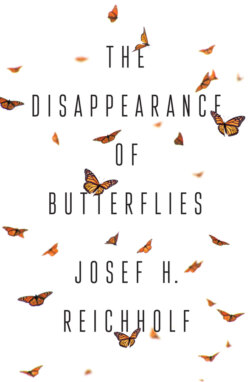Читать книгу The Disappearance of Butterflies - Josef H. Reichholf - Страница 24
Psychedelics in the insect kingdom
ОглавлениеVarious other insects also contain substances that have a psychedelic effect. Take, for example, the famous (or rather, infamous) Spanish fly, Lytta vesicatoria. It is not actually a fly but a beetle, related to the oil beetle. ‘Spanish fly’ is still sold as an aphrodisiac. The Medici family are thought to have become rich through the distribution of a special tincture known as aqua tofana, which, in the right dosage, strengthens virility. The active ingredient, cantharidin, has since become well known. It is more effective than potassium cyanide, corrodes the mucous membranes and destroys the kidneys. The toxicity level of this slow-moving beetle prevents it from being eaten by birds. Even greater protection is afforded by the toxin carried by the larvae of the Diamphidia nigroornata, or Bushman arrow poison beetles, in southern Africa. The bushmen of the Kalahari manufactured a lethal arrow poison from them in former times. Many Lepidoptera are ‘poisonous’ or ‘bitter-tasting’ because their caterpillars ate plants containing toxic substances or precursors to toxins that were converted into toxins inside their bodies through the process of digestion. Particularly poisonous moths, such as the diurnal Zygaenidae (burnet and forester moths), which are related to the tiger moths, fly so slowly that one can catch them quite easily. It is assumed that they do this on purpose. But cause and effect are probably the other way around. They have to fly slowly because, if they became too active, the toxins in their bodies would start to affect them. Toxins will always constitute a dangerous cargo, but they can also represent an opportunity for success, as can be seen from the large whites and their population, which continues to be comparatively high. I shall deal with this in a separate chapter.
As for what the butterflies do with the toad toxin that makes them so torpid, I do not know. When they feed on alcohol from rotting fruit, which clearly also intoxicates them, we are faced with the same question. Yet, since alcohol can be broken down and converted into energy, one can at least imagine (or convince oneself) that this justifies the risk of being caught by a bird because they are tipsy and unfit to fly. Perhaps we are too reluctant to accept the idea that animals also look for drugs simply because they are effective, and not because they have a particular biological purpose. But what sort of drugs are contained in a pile of dog turd? When butterflies swarm around this, it is even harder to understand.
An experience I had with a lesser purple emperor at the beginning of June 2018 is pertinent here. We had just finished evaluating a light trap. The morning sun was streaming over the roof of the small, remote farmstead and we were drinking a cup of coffee to round off our very productive work: the trap had attracted 168 moths of 59 different species and a dozen other insect species too. A purple emperor flew towards us out of the wood. When the light caught its wings at the right angle, they seemed to light up, like those of the much larger, more azure, morpho butterflies from the tropical rainforests in Central and South America. It was therefore a male, and, as we saw when it briefly rested on the house wall, of the lesser purple emperor species (see Photo 8). It swung in elegant arcs past the gold and brown immortelle flowers as if carrying out test flights, looped the loop around the petunias, whose flowers in their abundance of bright colours hung from the window sills and from the balcony of the house, putting on a show worthy of a picture postcard, and flew behind the house only to reappear again immediately. It flitted around, here and there, this way and that, for nearly five minutes, and then floated past the balcony and disappeared from sight, until we discovered the object of its desire. It was not any particular flowers or a sunny spot with just the right temperature. It was the cat litter tray. It was not easy to locate this, since there was barely any wind that morning. But the butterfly found it, with its erratic and almost chaotic style of flying, and was finally able to enjoy the excrement of the cat, which slunk around the table by our feet and watched the moths with us, as we checked the catch from the previous night.
What do these anecdotes have to do with the disappearance of the butterflies? Purple emperors are, if I may be permitted the expression, glimmers of hope. They still exist, and indeed, as I would like to emphasize, in greater, not smaller numbers than in the forests of my earlier research activities. Taking into account the fact that I have visited the riparian woods and commercial woodland of southeast Bavaria significantly more often since my retirement, because June and July were always term-time at the universities of Munich, and I cannot keep away from the purple emperors on a favourable day, I would tend to say that their population was ‘unchanged’. This is a helpful finding, since one must clarify which butterflies and moths in which habitat types have become scarcer in order to discover the causes. For this reason, we will now turn our attention to the Lepidoptera of the nettle patch, which have a few things in common, not least that nettles are the principal host plants for their caterpillars. Our considerations will be focused on the caterpillars and their requirements rather than on the butterflies themselves.
